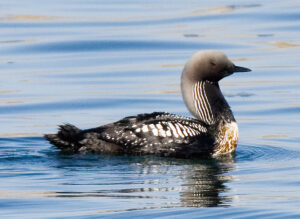In this report, Dr. Robert Campbell presents his analysis of data from two weather buoys that are sponsored by the Council.
The two buoys, one near the Valdez Marine Terminal and another near the Valdez Duck Flats, have been collecting data such as sea currents, wind direction and speed, wave direction and heights, and other weather-related information for the past 5 years. Dr. Campbell analyzed the data to determine weather trends throughout the year and seasonally at these two locations.
This information will help support environmental monitoring, oil spill contingency and response planning, trajectory modeling, and the safe transportation of oil in Port Valdez.
